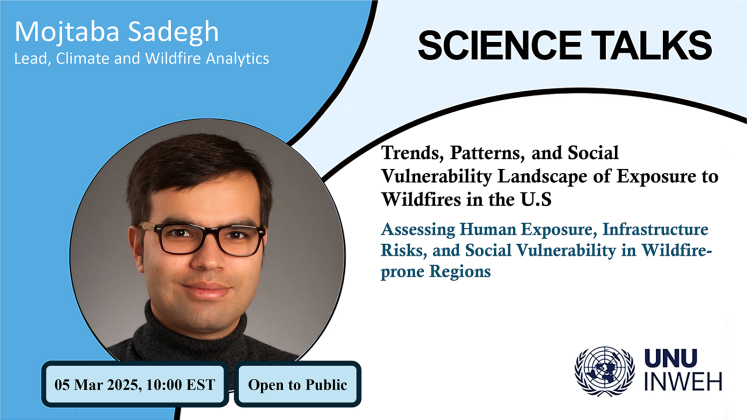An increasing number of wildfire disasters have occurred in the U.S. in recent years. In this Science Talk, Dr. Mojtaba Sadegh presents an analysis of cumulative human exposure to wildfires across the Contiguous U.S. (CONUS) from 2000 to 2019, revealing that approximately 594,850 people resided within large wildfire perimeters during this period — 82% of whom were in the Western U.S. The rate of primary population exposure increased by 125% over the past two decades, with population dynamics (e.g., migration and growth) contributing 24% of this increase, while wildfire extent drove the majority of the observed trends.
Dr. Sadegh will also discuss the widespread exposure of critical infrastructure, including roads (412,155 km) and transmission power lines (14,835 km), which saw a 58% and 70% increase in exposure to large wildfires, respectively, between 2000 and 2019. Additionally, he will assess the social vulnerability landscape of wildfire-exposed populations in California, Oregon, and Washington—states that accounted for nearly three-quarters of human wildfire exposure in CONUS. His findings highlight substantial differences in vulnerability distributions across these states and reveal a significant increase in exposure among highly vulnerable populations, including older adults and individuals with disabilities. Furthermore, the study identifies inequalities in wildfire exposure, particularly in California and Washington, where the social vulnerability of wildfire-exposed populations differs markedly from that of the general state population. These findings underscore the importance of equitable mitigation and adaptation strategies to enhance societal resilience to wildfires.
Register to join
Speaker

Dr. Mojtaba Sadegh
Lead, Climate and Wildfire Analytics



